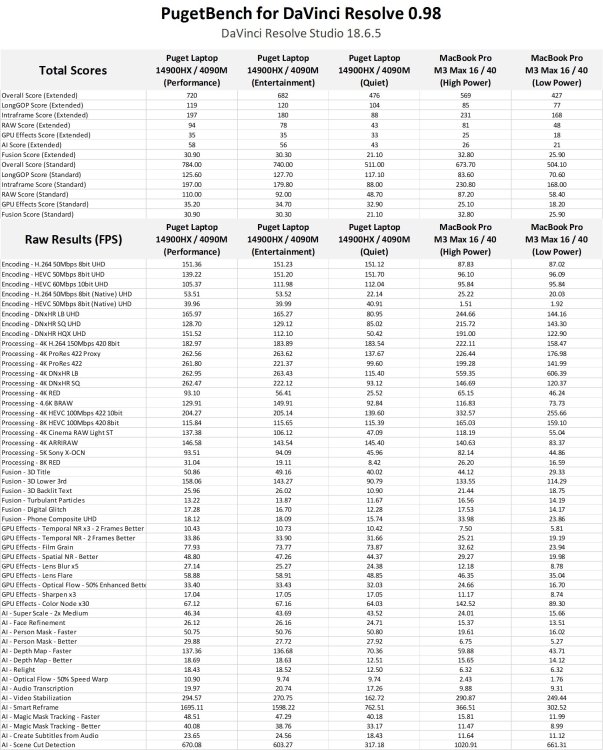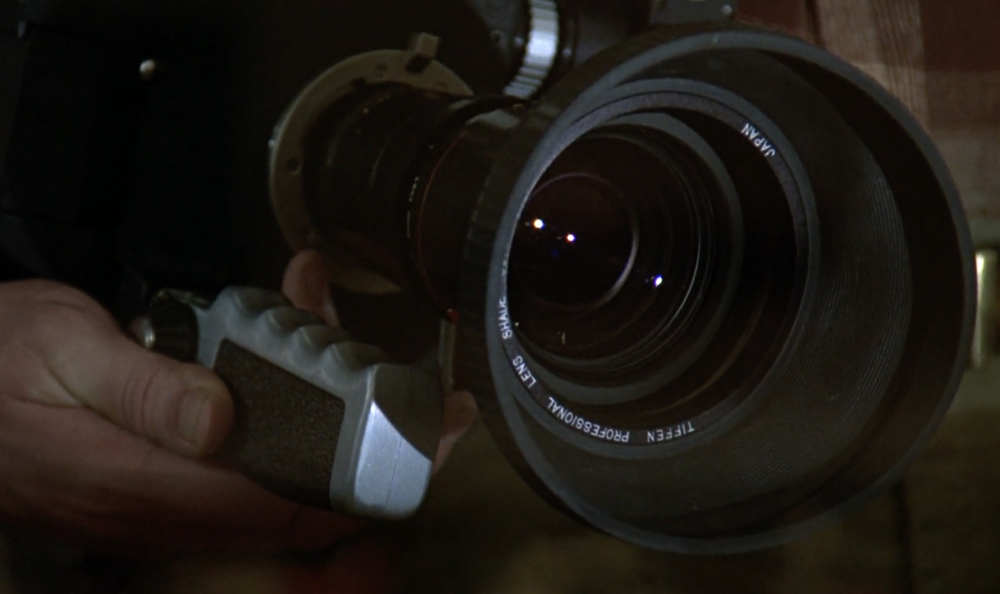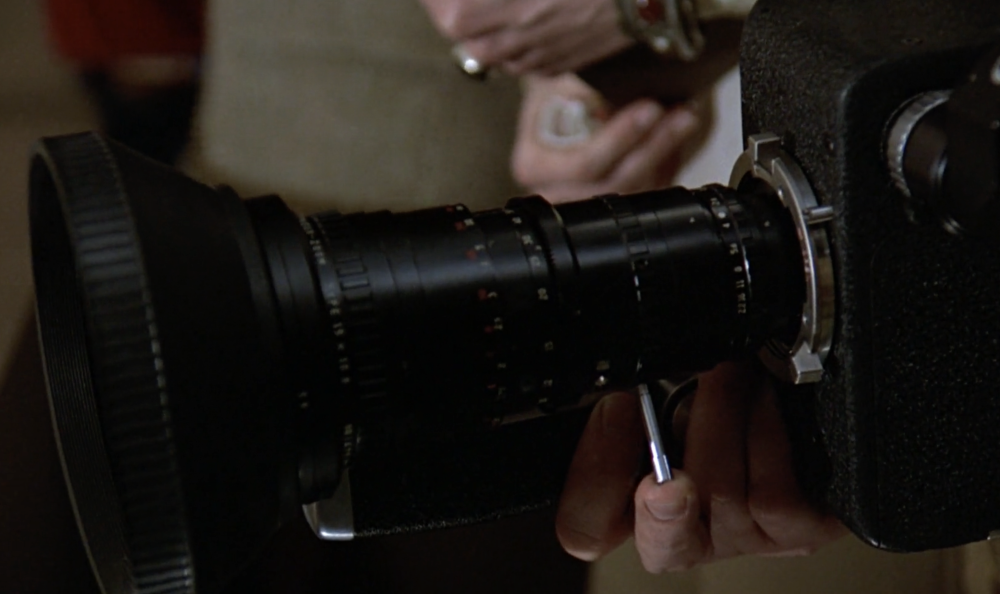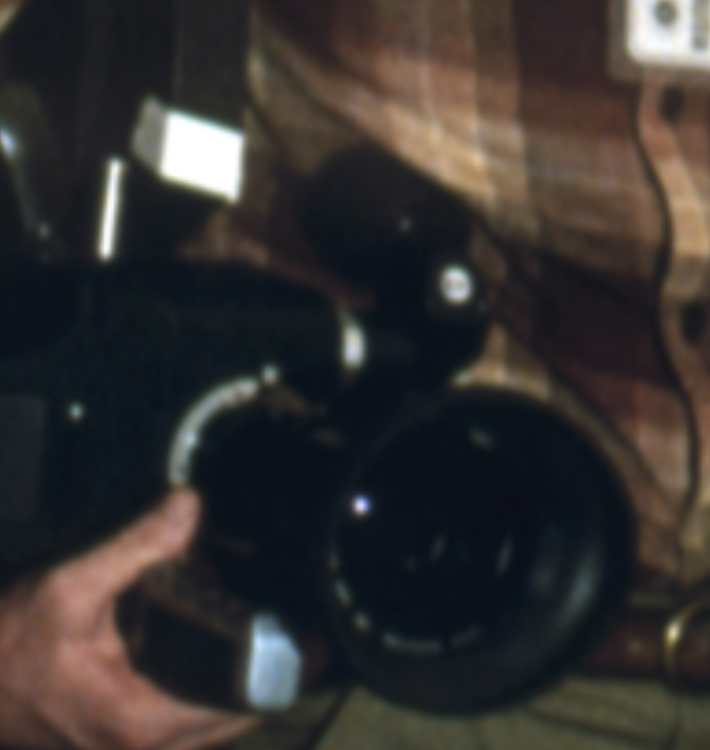All Activity
- Past hour
-
Maybe Canon are thinking that they'll keep their exclusivity on the super-sharp super-expensive lenses, but let the third-parties develop lower cost less technically perfect lenses? It would make sense and make the system a lot more accessible and attract a lot of new customers that wouldn't want to spend top dollar on pristine lenses. Their success on the EF line and how ubiquitous it was must have been a critical factor in their earnings over the decades, so making RF a new default standard is very much in their interests. You might be right about the split between FF and APS-C lenses though - that's still a strategy in a similar direction.
-
This might be a blessing-in-disguise, as a lot of cameras actually lose the last few seconds of footage before you hit stop. So it might be compensating for that and making sure no clips are cut short.
-
 kye reacted to a post in a topic:
Upcoming Insta360 X4 8K, in less than one hour, here?
kye reacted to a post in a topic:
Upcoming Insta360 X4 8K, in less than one hour, here?
-
 kye reacted to a post in a topic:
The China Syndrome (1979): What film camera did Micheal Douglas' character use?
kye reacted to a post in a topic:
The China Syndrome (1979): What film camera did Micheal Douglas' character use?
-
 kye reacted to a post in a topic:
Color - SOOC vs. LUTs/Grading
kye reacted to a post in a topic:
Color - SOOC vs. LUTs/Grading
-
I understand that a person can look at a larger quantity of footage and notice similarities and themes, but there are still a great number of un-accounted-for variables that can always bite you in the ass if you were to actually get that camera. The general look that cameras have online is likely to be the default look, partly because most people don't know the first thing about colour grading and mostly because the people who are posting videos and specifying the model number of the camera are likely in the shallow end of the skills pool, so to speak. The exception is cinematographers doing camera tests, but these have their own issues. The challenge comes in when you try and change the image in post. Try to add a bit more contrast and you might find that the image doesn't keep the things you liked about the look. In fact, the nicer the image looks SOOC or with the default LUT on it, the more fragile the image might be because the more pushed it will be. The most flexible images are the most neutral, and our brain doesn't like neutral images, it wants ones with the right herbs and spices already added. There really is no substitute for actually shooting with the camera the way that you shoot, in the situations you shoot in, and then grade it the way you grade it, trying to get the look you want, with your level of skill. TBH, most of the videos I see that have the name of the camera in them, that are graded with a "look", actually look pretty awful and amateurish to me. Either this is their lack of skill as colourist to not be able to get the look they wanted, or they did get the look they wanted and the look is just awful, but it's not a promising picture either way. I wonder how many of them are using colour management. If a camera is a 10-bit LOG with decent bitrate then the camera is one CST away from being almost indistinguishable from any other camera. Skin tones are a challenge of course, but when well-shot on capable equipment these are pretty straight-forward. There's a few principles I think are at play here: What I hear from high-level colourists is that if a project is well shot on capable equipment (without a "we'll fix it in post" mindset) then you can get your colour management setup, put a look in place, and 80% of the shots just fall into place. Then the time can be spent refining the overall look, adding a specific look to certain scenes (night scenes, dream sequences, etc), fixing any problem shots, and then you'd do a fine-tune pass on all shots with very minor adjustments. If it's not well shot to get it mostly right in-camera then you're in all sorts of trouble for post. If the client is inexperienced and doesn't know what they want, or they want something that is very different to how they shot the project. It's very easy to see colour grading make big changes (e.g. shooting day for night) or see the amazing VFX work done by Hollywood etc, and assume that anyone with a grading panel and calibrated reference monitor can do anything with any footage. If the client is a diva, or is somehow mentally unbalanced. Film-making is difficult enough to make almost anyone mentally unbalanced by the time they get to post-production and they're sitting with the colourist and every mistake done at any point on the project is becoming clearly visible on the huge TV in their studio. Throwing a fit at this point is perhaps a predictable human reaction! One colourist I heard interviewed said that when they were colour grading rap videos in the 80's they had to tell one client who had about 20 people in the colour grading suite that the strippers, cocaine, and machine guns had to go back into the limo otherwise they wouldn't be able to colour grade the project. Of course, none of this is the fault of the camera. I'd even theorise that the brand of camera might be a predictor of how much the colour grading process was setup to fail - if people shot something on a Sony rather than a Canon you might find they're more likely to be a clueless and self-entitled influencer etc. God help the colourists that are going to face a barrage of projects over the next few years shot on the FX3 where the person thinks the colourist can duplicate The Creator in post for a few thousand dollars! Also, the stronger the look you apply in post, the more those small colour science differences get lost in the wash. It's also worth asking, do you think the colourists on reddit are the ones who are fully-booked with more professional clients who have realistic expectations, or the ones out there dealing with the stressed masses and going online to learn and vent? My experience on the colourist forums is that the most experienced folks burn out from answering the same questions over and over again, and arguing with people who don't want to learn or put in the work, so the people who are there are mostly those early in their journeys. Only you can know this, because what you love will be different to what anyone else loves. But don't ask random strangers online, actually try it.... https://sonycine.com/testfootage/ https://zsyst.com/sony-4k-camera-page/sony-f55-sample-footage-downloadable-samples/ 🙂
- Today
-

Panasonic S5 II (What does Panasonic have up their sleeve?)
kye replied to newfoundmass's topic in Cameras
Absolutely. It works even for people who are genuine as well. If someone is learning the subject then they'll be gradually exploring all the many aspects of it, but it's only once they've explored many / most of these things that they'll be starting to connect things together and getting clear on how they all relate to each other and how they all relate to the desired outcomes etc. It requires that the person go through all the detail in order to integrate it into a single summary that can be explained to the average grandmother. You can skip various bits of the picture, but the outcome of that is that your understanding will potentially be skewed in a certain way towards or away from a more balanced understanding. I've personally found that film-making is a very complex topic because it involves the full gamut of topics... light, optics, sound, analog and digital electronics, digital signal processing, the human visual system, psychoacoustics, editing which involves spatial and temporal dimensions, colour theory and emotional response to visual stimulus, sound design and mixing and mastering and emotional response to auditory stimulus, storytelling, logistics and planning, and depending on how you do it, it might include business and marketing and accounting etc, or recruiting and managing a multi-disciplinary team to perform a complex one-off project, etc. It's no wonder that it takes people a good while to muddle through it and that at any given time the vast majority are in the middle somewhere and that many get lost and never make it back out into the daylight again. Add into that the fragility of the ego, vested interests, social media dopamine addiction, cultural differences, limited empathy and sympathy, etc and it's a big old mess 🙂 -
 kye reacted to a post in a topic:
Panasonic S5 II (What does Panasonic have up their sleeve?)
kye reacted to a post in a topic:
Panasonic S5 II (What does Panasonic have up their sleeve?)
- Yesterday
-
Yea and to clarify they’re referring to 10-bit cameras mostly. They do have preferences of canon Sony etc.
-
 SRV1981 reacted to a post in a topic:
Color - SOOC vs. LUTs/Grading
SRV1981 reacted to a post in a topic:
Color - SOOC vs. LUTs/Grading
-
That makes total sense. One would expect a professional colorist to groan a bit if handed 8-bit log footage vs 10-bit log (or 12-bit raw). I'd imagine that most want the most flexible image to work with when possible - there's a reason that Hollywood tends to shoot most stuff on Arri and it's not ease of use or portability.
-
For the most part, if somebody is looking at an Alienware prebuilt, they're probably not the target audience for BYOPC. At that point, it's better to go with somebody like Maingear, NZXT, or Starforge - they all use off-the-shelf parts, but you'll also pay more for the same specs as you'll get in a prebuilt from one of the big players. I'd be willing to bet that for a similar price to what you'd pay them for the above system, you'd be able to get a 14" MBP with M3 Max - and then you'd be able to edit on the go too. 😉
-
 Emanuel reacted to a post in a topic:
Upcoming Insta360 X4 8K, in less than one hour, here?
Emanuel reacted to a post in a topic:
Upcoming Insta360 X4 8K, in less than one hour, here?
-
 ac6000cw reacted to a post in a topic:
The China Syndrome (1979): What film camera did Micheal Douglas' character use?
ac6000cw reacted to a post in a topic:
The China Syndrome (1979): What film camera did Micheal Douglas' character use?
-
 gt3rs reacted to a post in a topic:
Sigma Announce RF Mount Lenses
gt3rs reacted to a post in a topic:
Sigma Announce RF Mount Lenses
-
 gt3rs reacted to a post in a topic:
Sigma Announce RF Mount Lenses
gt3rs reacted to a post in a topic:
Sigma Announce RF Mount Lenses
-
I had X2, 1 inch 360 and still have One R 360. I did play a bit more with the X4 The good: - 8k is a very visible bump in quality compared to X3 and 1 inch. Still once reframed is not yet at single lens action cam level but is getting closer. Of course, it really depends on how much you zoom in while reframing. It is more detailed and less compression artifacts. Also, in 360 vr the quality bump is very evident. - operations and UI are snappier than previous models (other than stopping the recording that takes a lot, not sure why) - 5.7k at 60 it allows some slow-motion with X3 quality, in previous models the slowmo was just unusable. - one button operation is customizable so you can set the video mode, frame rate, etc... - battery seems to last a lot, even in 8k 30 - App and Studio are great and work as expected. Connecting the camera to the phone is super easy and always works. Why can't Canon copy them? The ok: - lens guards work ok, great way of mounting them, but is not a free lunch, they need to be super clean, and they still create wired flares. I will probably use mine only on really risky situation. But it is good that they are included. - audio seems a tad better - I don't see a big difference in lowlight compared to the 360 1 inch. They are both quite bad but the X4 is not worst imo that is surprising. - single lens mode allows you 4k 60fps but to be honest the quality gain compared to 8k reframed is not big enough, useful if you need 60fps or you don't want to post process. For example, for chest mount I prefer the reframed angle than single lens. - seems to tend to overexpose but you can set the EV so not a big issue. The bad: - no 10bit log - as for all previous models these type of camera scream for sunny bright days. I mostly using them while moving ski, mtb, horses, cars.... and as soon the light is not great stabilization and video quality suffers a lot. So it is a brilliant camera for sunny days only. - is heavier and bigger than the X3 or the One R + 360 module. - the form factor is perfect for selfie stick but not great for helmet mount. - has only a tripod hole, no gopro mount, it should have both. For action, mounting through the tripod hole will make the camera break in case of any impact where normally the gopro mount would give a bit saving the camera. You can use an adapter, but it makes it even taller. - apparently, every time you turn on the camera you need to re-pair the bluetooth mic. Btw why why and why DJI is disabling internal Mic 2 transmitter recording while connected via bluetooth?!? It would be such a clean solution record scratch over bluetooth (no receiver needed) and have the 32bit float on the transmitter. - external audio through receiver + cold shoe mount + usb adapter is a frankenmoster that is really not usable in action environment. All the YT reviver showing this setup as amazing it makes me cry.... Overall is the best 360 camera on the market by far, coming close to single lens action cam quality, below 2k usd. Finally, after years of stagnation, a tangible bump in quality. With the revival of AR/VR they should do a 180 3D model out this.
-
I would definitely not buy an Alienware prebuilt. They tend to have poor upgradability, might use weird custom parts (I think in the past there were custom sized mainboards and/or PSU used in some models) and tend to have no too great thermals. Building a PC is quite easy and there are part lists available to ensure compatibility between components.
-
 SRV1981 reacted to a post in a topic:
The China Syndrome (1979): What film camera did Micheal Douglas' character use?
SRV1981 reacted to a post in a topic:
The China Syndrome (1979): What film camera did Micheal Douglas' character use?
-
Agree! Been watching hours of footage and notice a personal bias toward canon images - and it seems to be the way they render color and skin regardless of user - it’s over hours of footage. That’s us! Yes I get this, after feeling a little dejected from the original question and response I checked the subreddit “colorists” and there’s tons of threads and comments noting that they prefer to receive images from some cameras and brands over others. it seems to come down to difficulty - if you have the same face, scene, lighting etc and 5 different cameras or brands - these colorists had noted that to get the desirable look was much easier than others and frustrating and painstaking on others. Which is why I felt it difficult to accept notions of makeup or learn color grading. The tools themselves can aid in that journey. I’ve learned through this that the way canon renders color, specifically skin, is my favorite look. That doesn’t mean I’ll go run out to grab an r5 or r8 - the feature set is far inferior to an a7s3 or a7iv, I think. I was curious what more knowledgeable folks preferred as their starting point tool. Do you use a gx85 for your travel and fs7 for work? Or is it an r5 for travel and fx6 for work, etc? That’s all I was hoping to discuss here and then follow with - “why did you choose that tool”. sometimes we bring our own gripes and biases to a question and don’t answer the quesirtin. that said, now my next question is can you achieve the same appeal of color on mid-level Sony bodies as you can on the canons that produce color I love. And if so, how easy is it to do? Great video - saw this years back I believe. That said. I loved the 1/8 look for general purpose filming but anything more was very stylized for my taste.
-
I think it's likely to be a real camera and lens (for the reasons you mention), but no idea which lens. TV news gathering was in a slow transition phase from 16mm film to ENG back then, so there would have been plenty of working 16mm film equipment around, used both for news and other TV production outside the studio environment.
-
Panasonic S5 II (What does Panasonic have up their sleeve?)
ac6000cw replied to newfoundmass's topic in Cameras
I very much agree with that - the opposite of someone filling an answer with the latest buzzwords, fashion statements and acronyms to gloss over the fact that they don't really understand the subject. I've been interested in science and engineering from quite young (the first book I ever bought was about electricity and magnetism). Favourite subject at secondary school was physics, helped a lot by an enthusiastic teacher who really understood the subject and could explain the fundamentals behind it very well. When I went on to study physics and electronics at university, in marked contrast some of the lecturers were terrible at explaining things in a simple fashion. One lecturer in particular kept pushing his own textbook, which was just as impenetrable as his lectures, so some of us students just gave up and found a book that explained the basics of the subject much better, just to get us through the exam at the end of the year... (and it was a subject that in my subsequent electronic design engineering career I've become much more familiar with - so now I know it's mostly much less complicated than it seemed at the time). "Simplicity is the essence of good design" I've found to be very true. If things start getting too complicated and messy in a project, it's usually a sign that I didn't set off in the right direction at the 'blank sheet of paper' stage. -
Excellent point about the compatibility - I'm so used to MFT and almost everything being interchangeable that I'm not used to even thinking about these things! In terms of it being a prop, I would have thought that it would have been easier to grab whatever was the cheapest / most common / not-rented item from their camera rental house. I mean, if you're shooting a feature film then you're renting a bunch of stuff anyway, so renting an extra 16mm setup to use as a prop wouldn't be hard at all. They could have rented it from a production design rental house along with all the other props etc, but then anything in that place would be non-working and likely turned into a prop when it stopped working. In this sense, it's very unlikely to have been a camera / lens combination that wasn't compatible, as someone would have had to have glued the lens on the body or something, which takes extra effort etc which wouldn't be needed considering there would be that many of those cameras and lenses that wore out or got dropped into a river etc that they'd be worthless and ubiquitous.
-
If it was a real working 16mm film camera, I don't think it would be an ENG (Electronic News Gathering) lens, as they are designed for professional portable video cameras (which in the late 1970s would have been triple vacuum tube image sensor cameras using a dichroic colour splitting prism, thus having a long flange-to-sensor optical path). But of course in the movie it's basically a prop, so doesn't have to be a working camera.
-
Tamron is also putting out an RF-S (APS-C) zoom lens (11-20mm F2.8). Makes sense as Canon have barely developed any RF-S lenses (not a single prime or fixed aperture lens). So this will surely help sell crop bodies. So yeah while this is great news for APS-C Canon owners, I really don’t see this as a solid indicator Canon will open third party FF RF lenses although one can hope!
-
I don't think so.. all the photos I found showed the Angenieux has the writing on the outside and not visible from the front Filters don't tend to have writing on them like that - that pattern looks like lens info anyway. None of the ones on here have writing that looks similar either: https://www.oldfastglass.com/cooke-10860mm-t3 It seems to have one of those boxes that controls the lens and provides a rocker switch for zooming etc, maybe that narrows it down? Maybe it's an ENG lens rather than a cinema lens?
-
I've heard that the 12K files are very usable in terms of performance, but it will likely depend on what mode you're shooting in. Most people aren't using the 12K at 12K - they're using it at 4K or 8K. Regardless, Resolve has an incredible array of functionality to improve performance and enable real-time editing and even colour correction on lesser hardware. This is a good overview:
-
Well that is pretty decent. In that case, I might look even harder at the system next year… The R3 is for my needs the best body currently on the market. A Nikon Z6iii with additional battery grip is probably going to beat it…maybe…for me and as someone now 50% invested in Nikon, almost certainly where I will be going. But at the end of every season, I review my needs and Canon could be an option, especially now that Sigma have joined the party, but would need to have brought out a pretty extensive FF line by next Spring. I think Canon really do need to lighten up on their lens stance though or it will bite them in the arse. If it is not already nibbling…








